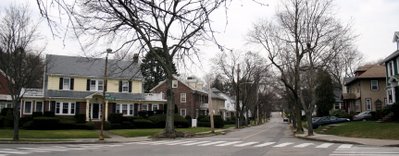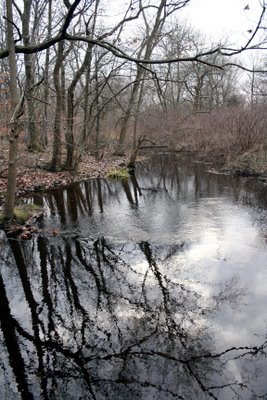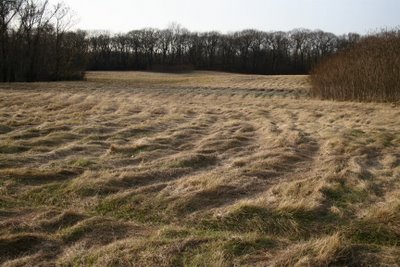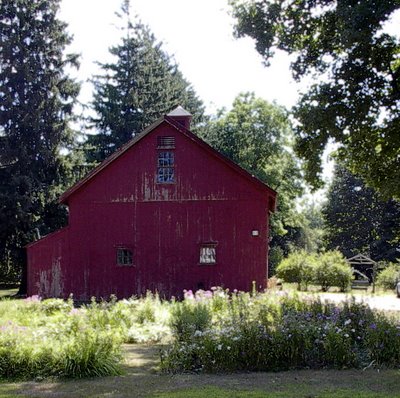But I am fascinated by genealogical research and could happily spend hours organizing papers, entering information in a computerized family tree, and poring through census, civil, and parish records.

So I got to thinking, what about other gardeners in my family? And before the concept of gardening had trickled down to the common folk, what about the plain old farmers--the cultivateurs, labourers, and Bauern--among my ancestors? Here's what I dug up.
In 1634, my eighth great-grandfather settled an eight-acre homestall in what was then Watertown, Massachusetts. His plot, about a half-mile from where I now live, today lies under suburban housing.

Later, he acquired land in the area of Beaver Brook

and Rock Meadow.

There is no record of what he farmed, but presumably this low-lying land served as pasturage. His will, written in 1685, mentions his house, meadow acreage and a barn in Cambridge Farms.
Fast forward about 300 years to my mother, a passionate tiller of her own back quarter acre. Her love of gardening may have grown from spending summers at her aunt's Connecticut house, where daily tasks included picking sweet peas and gooseberries growing next to the barn.

Years later, my mother marveled how it was that ever more flowers and fruit were waiting each morning. I think that realization somehow connected her with the potential of earth, sun, and rain.

Back in her Maryland community, both she and her own mother belonged to the local garden club. Well into her eighties, she could be found spending six or more hours a day in her yard.
My mother was a yes-or-no kind of person, and her garden celebrated that same lack of nuance. She tolerated a few perennials and adored her roses, but through out the summer subsisted on the brightest of brilliantly colored annuals: petunias, salvia, marigolds, zinnias, and dahlias. Her garden was splashed with primary colors, particularly hot pinks, reds, oranges, and yellows. There was no subtle juxtaposition of contrasting textures, shapes, and colors--plants earned a place while in bloom and were expeditiously rooted out upon their decline. Unsentimental, cheerful, and practical. You can learn a lot about a person from looking at her garden.



No comments:
Post a Comment